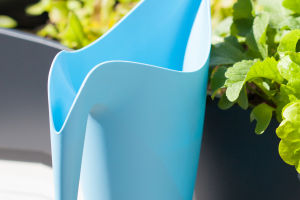A lifebuoy is a crucial first-aid tool extensively employed in water rescues.
Its design and function are meticulously crafted to provide indispensable support and safety during emergency rescue operations.
Part One: The Uses of Lifebuoys
Lifebuoys find application in a diverse range of water environments and situations, including but not limited to:
Pool Safety: Placed conveniently within swimming pools, lifebuoys offer rapid assistance in emergencies.
Beach Rescues: Lifeguards stationed at beaches and coastal areas typically carry lifebuoys to promptly rescue drowning individuals when necessary.
Water Sports: Essential safety equipment for water sports, lifebuoys provide buoyancy and support in case of emergencies.
Ship Safety: Ships carry lifebuoys as part of their safety equipment to address emergencies and man-overboard incidents.
Flood Season Rescues: During floods and heavy rains, lifebuoys play a pivotal role in rescuing individuals trapped in water.
Swimming Training: In swimming training for both children and adults, lifebuoys are often utilized to teach drowning victims how to employ them to maintain buoyancy and safety.
Part Two: Lifebuoy Maintenance
To ensure lifebuoys remain effective and reliable, regular maintenance is essential:
Regular Inspections: Routinely examine the lifebuoy's appearance and structure, checking for cracks, breaks, or signs of wear. Address any issues promptly through repair or replacement.
Cleaning and Maintenance: Keep the lifebuoy clean to prevent the accumulation of dirt and contaminants. Use a mild detergent and water for cleaning, ensuring thorough drying.
Rope Inspection: Verify that the lifebuoy's rope is intact, without any breakages or fraying. The rope is a critical component that must retain its strength and durability.
Inflatable Lifebuoy Pressure Check: For inflatable lifebuoys, periodically check the gas pressure to ensure it remains adequately inflated, providing sufficient buoyancy.
Storage Conditions: Properly store lifebuoys to shield them from direct sunlight, high temperatures, or humidity. Store them in well-ventilated areas, away from sharp objects.
Part Three: Proper Use of the Lifebuoy
Throwing the Lifebuoy: If someone requires rescue, ensure the rope on the lifebuoy is untied. Stand in a safe location and throw the lifebuoy towards the drowning individual, ensuring the rope fully extends.
Grasping the Rope: The drowning individual should attempt to seize the rope on the lifeboat, maintaining a connection to it.
Facing Inward: The drowning individual should position themselves with their face towards the interior of the lifebuoy, preventing water from entering their mouth and nose.
Steady Rescue: When multiple individuals are involved in the rescue, ensure they coordinate their efforts to steadily bring the drowning person to safety.
Avoiding Lifeguard Contact: During the rescue, refrain from grabbing the lifeguards to prevent interference with their duties.
Lifebuoys are integral to water safety, their straightforward yet effective design rendering them an indispensable tool for emergency rescue.
Understanding the history, structure, types, purposes, maintenance, and proper usage of lifebuoys is vital for both participants in water activities and rescuers. By correctly employing and maintaining lifebuoys, we can better safeguard ourselves and others, ensuring safety while enjoying water-related activities.


